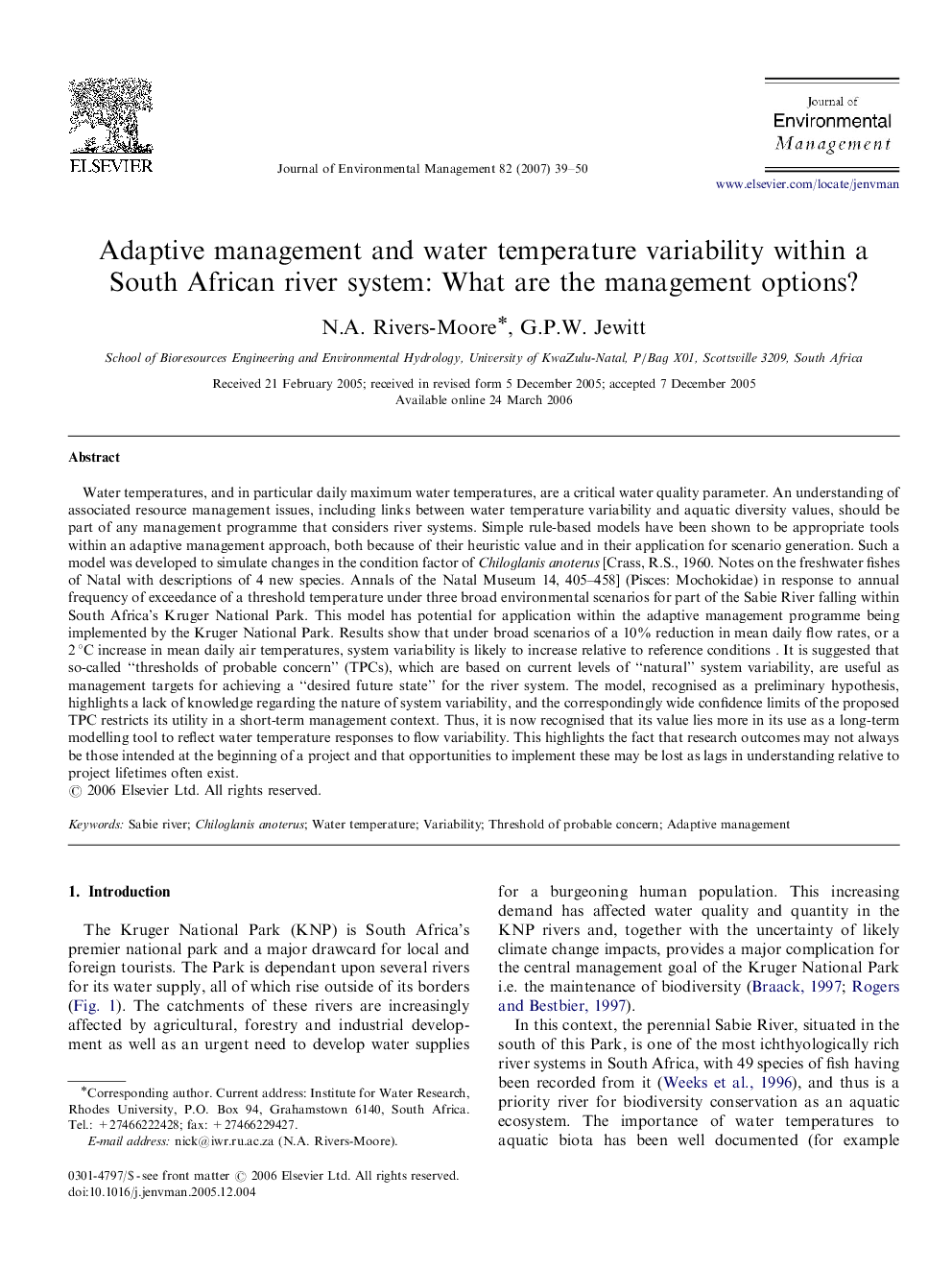| کد مقاله | کد نشریه | سال انتشار | مقاله انگلیسی | نسخه تمام متن |
|---|---|---|---|---|
| 1057921 | 947097 | 2007 | 12 صفحه PDF | دانلود رایگان |

Water temperatures, and in particular daily maximum water temperatures, are a critical water quality parameter. An understanding of associated resource management issues, including links between water temperature variability and aquatic diversity values, should be part of any management programme that considers river systems. Simple rule-based models have been shown to be appropriate tools within an adaptive management approach, both because of their heuristic value and in their application for scenario generation. Such a model was developed to simulate changes in the condition factor of Chiloglanis anoterus [Crass, R.S., 1960. Notes on the freshwater fishes of Natal with descriptions of 4 new species. Annals of the Natal Museum 14, 405–458] (Pisces: Mochokidae) in response to annual frequency of exceedance of a threshold temperature under three broad environmental scenarios for part of the Sabie River falling within South Africa's Kruger National Park. This model has potential for application within the adaptive management programme being implemented by the Kruger National Park. Results show that under broad scenarios of a 10% reduction in mean daily flow rates, or a 2 °C increase in mean daily air temperatures, system variability is likely to increase relative to reference conditions . It is suggested that so-called “thresholds of probable concern” (TPCs), which are based on current levels of “natural” system variability, are useful as management targets for achieving a “desired future state” for the river system. The model, recognised as a preliminary hypothesis, highlights a lack of knowledge regarding the nature of system variability, and the correspondingly wide confidence limits of the proposed TPC restricts its utility in a short-term management context. Thus, it is now recognised that its value lies more in its use as a long-term modelling tool to reflect water temperature responses to flow variability. This highlights the fact that research outcomes may not always be those intended at the beginning of a project and that opportunities to implement these may be lost as lags in understanding relative to project lifetimes often exist.
Journal: Journal of Environmental Management - Volume 82, Issue 1, January 2007, Pages 39–50